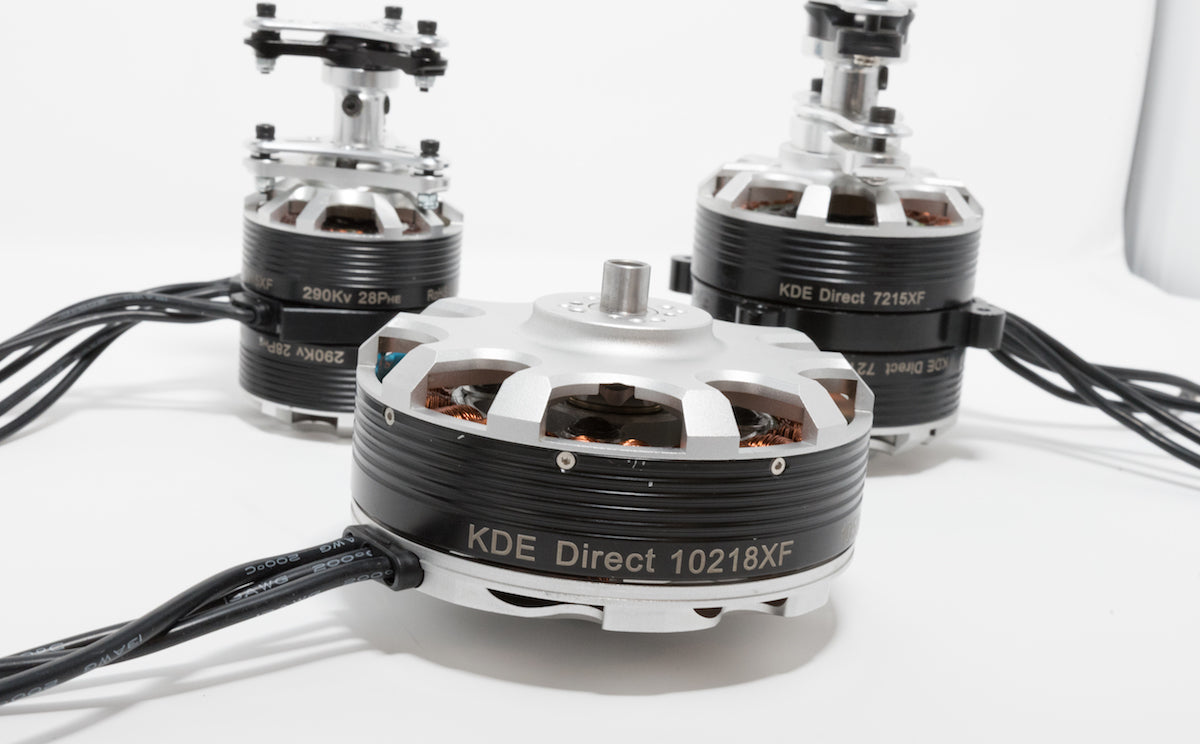OSU and KDE Direct Discover a New Way to Power Drones

Battery powered drones can fly for up to 60 minutes with specialized endurance systems, but most drones average around 20. Adding bigger batteries has traditionally been the method to try and increase flight-time, but the increased weight requires bigger motors, larger diameter propellers, and higher-power ESCs to lift them. This puts engineers and hobbyists alike wind up back where they started—without sufficient power to lift the drone. LiPo batteries, the highest-energy density power option readily available, create a similar challenge—it’s impossible to pack in more juice without increasing fire risks (volatility) or adding more weight. But what other options are there?
Gasoline-Powered Drones
Dr. Christopher Hagen, an Associate Professor at Oregon State University, and his team seek to solve the power issue through the use of gasoline. Gas is a well-known energy source that’s cheap, readily available, and been used in model and aerospace aviation for decades.
However, gasoline has not traditionally been used as fuel for drones. Drones typically rely on electricity, which has been fundamental to their design. The propellers of a drone must speed up and slow down hundreds of times per second to maintain stability in the sky. This is within the capabilities of an electric motor, but much too fast of a response for a gas or diesel engine.
Tom Herron, a mechanical and electrical engineer on Hagen’s team, suggested using a heavy-lift multirotor motor as a generator. The problem is that large motors are brushless. For a long time you couldn’t use brushless motors as generators without great difficulty or custom electronics. The potential solution? A control methodology termed “Full Synchronous Rectification.” This is a technical term for what is essentially power generation. Rather than the ESC being used solely for propulsion (powering a motor), it can act as an electrical brake, converting the rotational energy of the propeller into electricity used for recharging batteries or powering other motors. However, when first looking into the technology, Herron believed that no manufacturers were building ESCs capable of full synchronous rectification.
KDE Direct Develops Synchronous Rectification ESCs
KDE Direct has been developing ESCs with full synchronous rectification capabilities for years, though it was done to solve a different dilemma. As the propellers on a multirotor become increasingly larger, they also increase in rotational inertia. Since the stability of the aircraft depends on rapid acceleration and deceleration of the propeller in-flight, if the propeller becomes too large, the rotor will continue to spin for a while (slow deceleration) after the ESC has stopped giving power to the motor. Since hundreds of these changes are needed every second to keep a multirotor stable in the sky, larger propellers with greater inertia can cause problems keeping the drone under control, especially in wind or other adverse weather conditions, despite the advantages of increased lift and aerodynamic efficiency.
However, KDE Direct’s engineering team discovered that if they implement full synchronous rectification into the ESC motor control algorithms, they can apply a braking force to bigger propellers to make them respond similarly to smaller propellers, which provides added efficiency and stability unwitnessed before the release of the technology.
This technology also produces a small amount of electric power when it is actively slowing the motor. This was the breakthrough Herron required to build a gasoline-powered drone. After learning this when meeting with KDE Direct Engineers, Herron hooked a heavy-lift motor up to an ESC set to provide continuous synchronous rectification. By adding it to the team’s dynamometer for detailed studies, he discovered the combination was able to produce two kilowatts (2000W) of continuous power quite easily. When the OSU team’s drone was full of fuel, it weighed 20 pounds. While hovering, it created a 1,200-watt demand on the system so power was readily available and in ample supply.
Not only would a gasoline-powered drone fly, but it could do so with power to spare and flight-times extending well beyond the limitations of a LiPo-driven UAS. With a working proof-of-concept for a gas-electric hybrid drone, there is a critical mass of drone development rising in Oregon, and things are only looking up from here.
Share this post
- Tags: drone flight time, drones, osu, power drones, tech news




